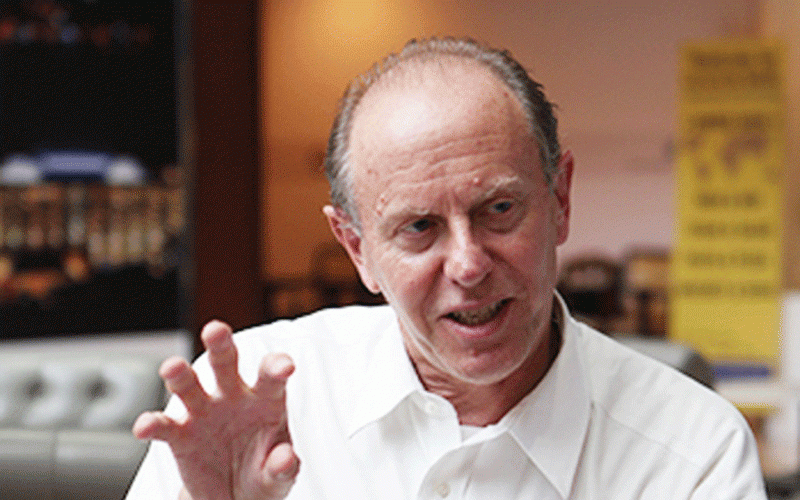
THE ECONOMIC decline and the continued state of infrastructural disrepair in Zimbabwe’s southern region is definitely a cause of concern. The region has become an economic nightmare where the people are haunted by the distant memories of an economy that was once vibrant.
Apart from the environmentally destructive gold panning, there is nothing else of economic value going on in the region.
One does not need to go far to see how informal and haphazard mineral extraction is reshaping the geography of the region.
The lack of a formal economy in the southern region is not only fanning ongoing economic hardships, but it is causing the death of towns that were once hives of economic activities.
Particularly worrisome is the painful, but sure death being experienced by the city of Bulawayo. Bulawayo was once a thriving city with the wheels of industry in motion.
Previously considered the nation’s industrial hub, Bulawayo is now a pale shadow of its glorious past. Today’s Bulawayo stands as a ghost industrial town with only the disintegrating factories forlornly standing as reminders of the good old days.
Strangely, even the population of Bulawayo is reported to be experiencing a downward trend. Some people who are passionate about Bulawayo regard the reported population decline as statistical cleansing of some sort.
This decline contradicts national trends which show most of the urban areas continuing to post general upward trends in population growth. In normal circumstances such a marked deviation from the ordinary would trigger reactions from authorities.
- Chamisa under fire over US$120K donation
- Mavhunga puts DeMbare into Chibuku quarterfinals
- Pension funds bet on Cabora Bassa oilfields
- Councils defy govt fire tender directive
Keep Reading
It is a given that in thirty years the population of a peace-time city with no major disaster should actually appreciate reasonably.
One would recall how in 1993 the then mayor of Bulawayo, councillor Joshua Malinga disputed the 1992 census result which portrayed Bulawayo as a large village and not a city.
As if cursed by the gods, we again learnt from the 2012 census results that Bulawayo’s population continued to decline.
According to census, Bulawayo was the only region in Zimbabwe to register a negative population growth rate (-0,3%).
Since the census was carried out more than a year ago, nothing has been proffered by government to explain this concerning trend.
With the authors of this statistical tragedy having failed to explain this anomaly, it is left to the people of the south to speculate on the root causes.
Out of all the urban centres in Zimbabwe and indeed in the world, Bulawayo is one of the very few cities that have managed to register a decline in population.
According to a global cities theory, urban centres like Bulawayo and Detroit in the United States undergo population shrinkage due to reliance on outdated industrial infrastructure and manufacturing economies. The theory posits that cities with financial institutions and other specialised services are potential growth areas.
So, did Bulawayo dig its own grave by not modernising its manufacturing infrastructure?
A deeper analysis of Bulawayo’s economic performance indicates that the city has been hit from two unfriendly fronts; a lack of economic foresight and politics.
The city has suffered an economic decline due to a static approach in its core businesses and for years has endured political onslaught from a vindictive central government. These factors have been insidious in corroding the core of Bulawayo’s economic activities.
In the economic front, Zimbabwe’s economy experienced unimaginable battering for almost a decade up to around 2009. This inevitably led to less economic activities in most urban centres, Bulawayo included.
Although the economy of Zimbabwe has enjoyed a steady growth from 2009, for some reasons Bulawayo has surprisingly been insulted with negative economic and population growth.
Bulawayo’s failure to grow when the economy is picking continues to defy logic.
After the injection of life into the economy through the dollarisation of the monetary system, Bulawayo was not poked from its economic slumber. The wheels of industry in Bulawayo could not turn as they had not been oiled with meaningful capital injection.
There was not much of commitment from central government to spur the once mighty industrial giant into action. The implications of the Look East policy meant that cheaper imports started coming in from China to further stifle any hopes of Bulawayo’s revival.
Certainly it does not make sense to manufacture vehicle tyres at Dunlop Bulawayo when either Qingdao Ltd or Shengtai Ltd can land better tyres for sale in Bulawayo at half the price of similar products made in our lovely city!
If the political vendetta by central government goes indefinitely, Bulawayo would find it very hard to justify the hosting of the annual international trade fair.
When central government finally makes that decision to recall the trade fair to Harare, the people of Bulawayo should not claim that they were not warned. In any case why would any company executive be keen to advertise a novel tonic drink in a morgue like Bulawayo when the sophisticated market in Harare is waiting?
Rest in peace Bulawayo! Masola waDabudabu is a social commentator










